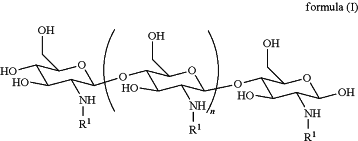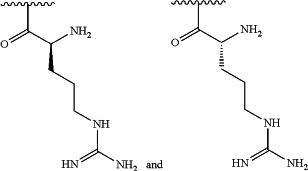| CPC A61K 31/722 (2013.01) [A61K 9/0014 (2013.01); A61K 9/0043 (2013.01); A61K 9/0053 (2013.01); Y02A 50/30 (2018.01)] | 18 Claims |
|
1. A method of reducing the viscosity of viscous sputum in the respiratory system of a human subject having cystic fibrosis, the method comprising:
administering to the subject by inhalation a therapeutically effective amount of a composition comprising a derivatized chitosan, wherein the derivatized chitosan comprises a chitosan of the following formula (I):
 wherein:
n is an integer between 20 and 6000; and
each R1 is independently selected for each occurrence from hydrogen, acetyl, and a group of formula (II): wherein, formula (II) is selected from
 wherein at least 25% of R1 substituents are H, at least 1% of R1 substituents are acetyl, and at least 4-30% of R1 substituents are a group of formula (II), the molecular weight of the derivatized chitosan is between 10,000 and 150,000 Da, and the polydispersity index (PDI) of the derivatized chitosan is between 1.5 and 2.5, wherein, upon administration, the composition disrupts a preformed biofilm in the respiratory system of the subject and reduces the viscosity of viscous sputum in the subject relative to sputum that has not been contacted with the composition.
|